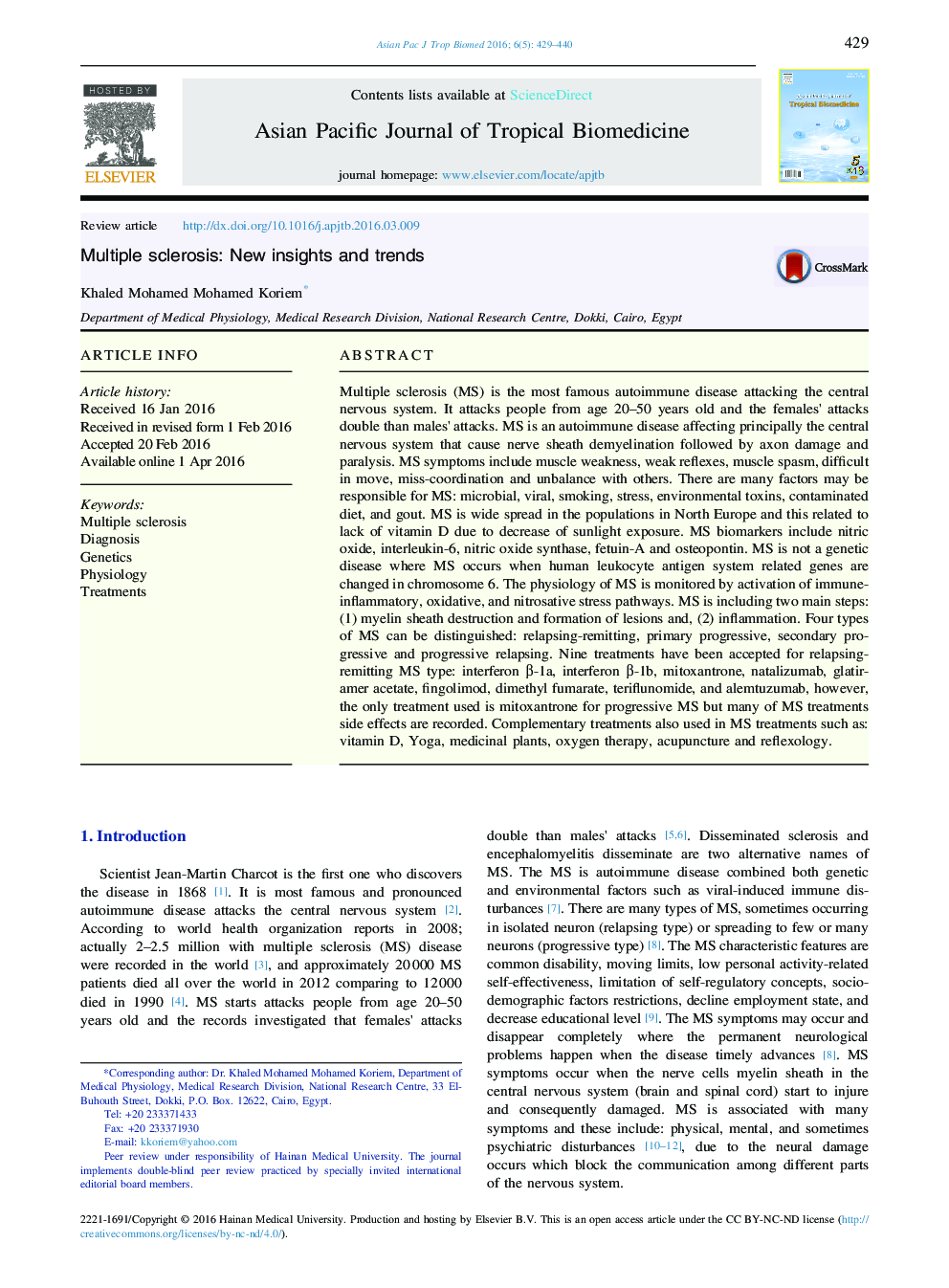| کد مقاله | کد نشریه | سال انتشار | مقاله انگلیسی | نسخه تمام متن |
|---|---|---|---|---|
| 2032535 | 1542865 | 2016 | 12 صفحه PDF | دانلود رایگان |
Multiple sclerosis (MS) is the most famous autoimmune disease attacking the central nervous system. It attacks people from age 20–50 years old and the females' attacks double than males' attacks. MS is an autoimmune disease affecting principally the central nervous system that cause nerve sheath demyelination followed by axon damage and paralysis. MS symptoms include muscle weakness, weak reflexes, muscle spasm, difficult in move, miss-coordination and unbalance with others. There are many factors may be responsible for MS: microbial, viral, smoking, stress, environmental toxins, contaminated diet, and gout. MS is wide spread in the populations in North Europe and this related to lack of vitamin D due to decrease of sunlight exposure. MS biomarkers include nitric oxide, interleukin-6, nitric oxide synthase, fetuin-A and osteopontin. MS is not a genetic disease where MS occurs when human leukocyte antigen system related genes are changed in chromosome 6. The physiology of MS is monitored by activation of immune-inflammatory, oxidative, and nitrosative stress pathways. MS is including two main steps: (1) myelin sheath destruction and formation of lesions and, (2) inflammation. Four types of MS can be distinguished: relapsing-remitting, primary progressive, secondary progressive and progressive relapsing. Nine treatments have been accepted for relapsing-remitting MS type: interferon β-1a, interferon β-1b, mitoxantrone, natalizumab, glatiramer acetate, fingolimod, dimethyl fumarate, teriflunomide, and alemtuzumab, however, the only treatment used is mitoxantrone for progressive MS but many of MS treatments side effects are recorded. Complementary treatments also used in MS treatments such as: vitamin D, Yoga, medicinal plants, oxygen therapy, acupuncture and reflexology.
Journal: Asian Pacific Journal of Tropical Biomedicine - Volume 6, Issue 5, May 2016, Pages 429–440
